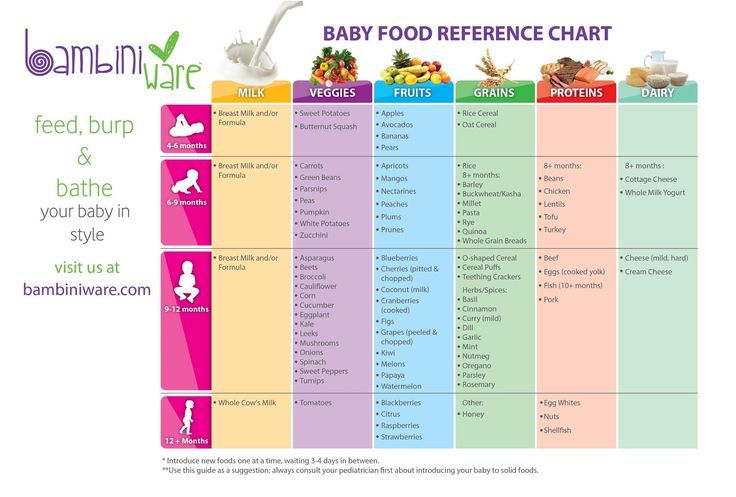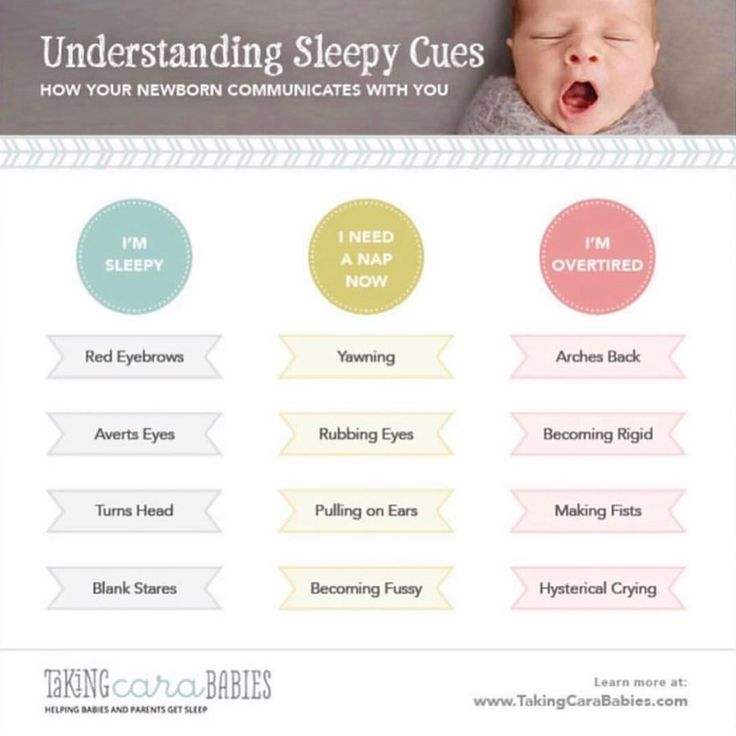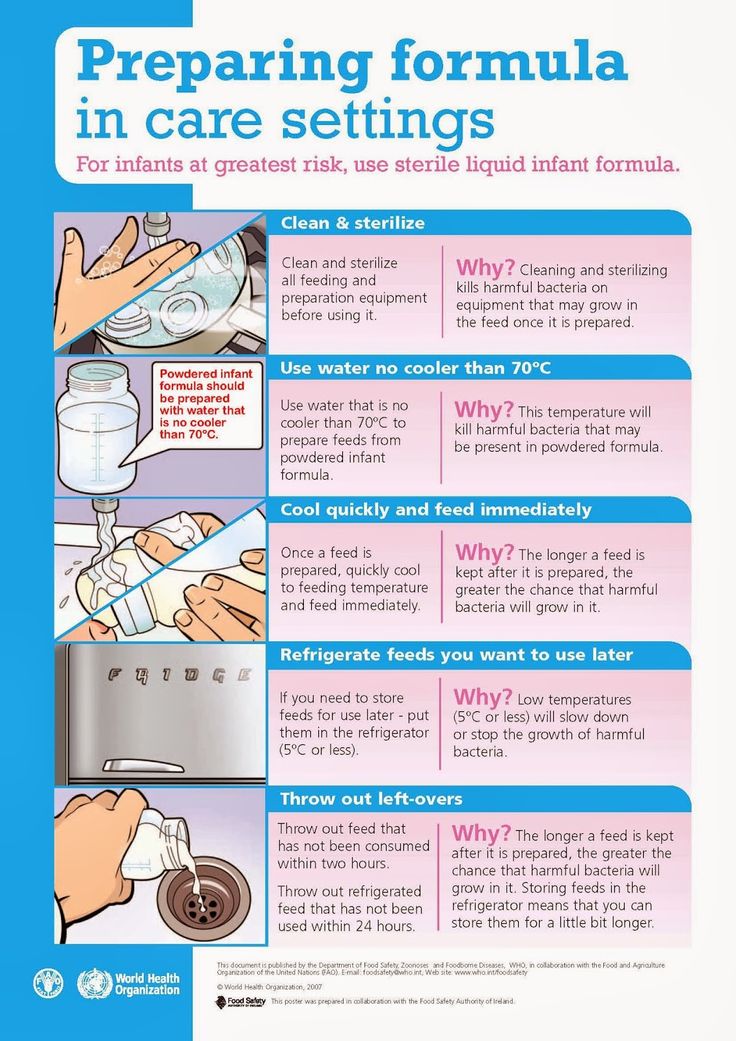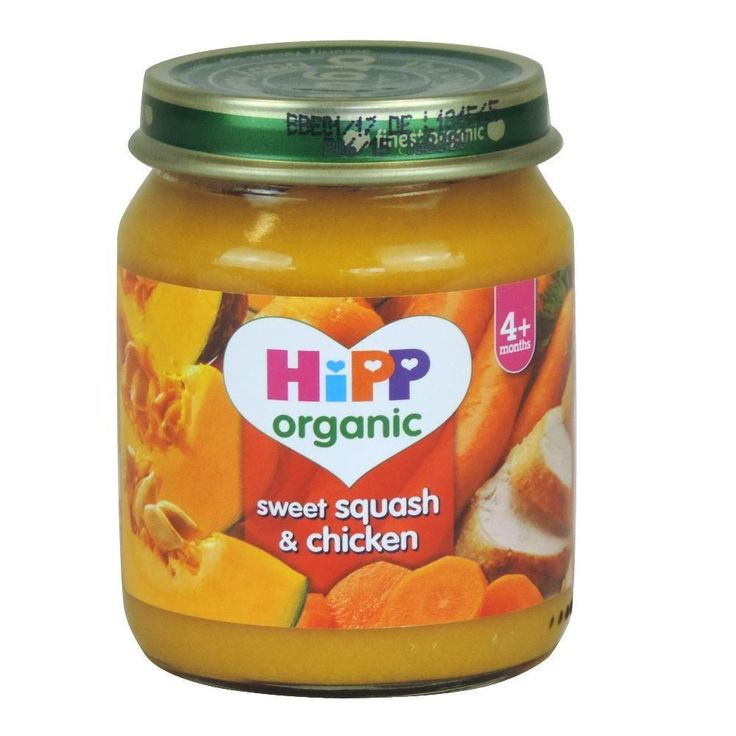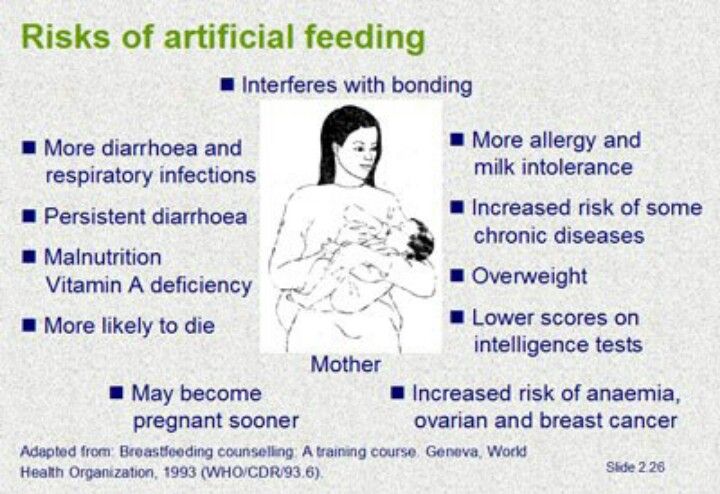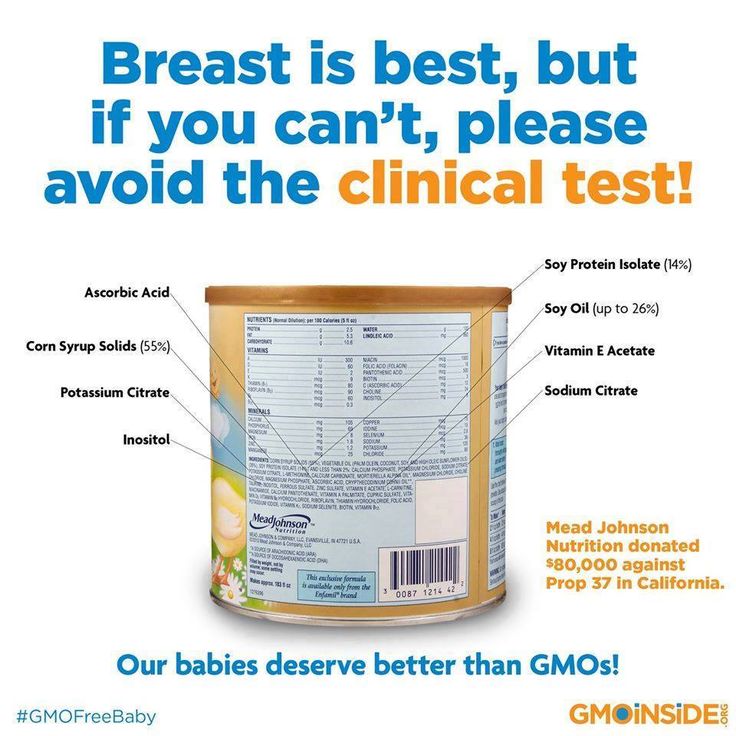Food baby 7 months can eat
What To Feed Your Baby | 7 to 9 mths | Weaning
Baby's age
- Around 6 months
- 7 - 9 months
- 10 - 12 months
- 12 months+
7 - 9 months
By now, your baby will have had some good practice learning how to eat! Eat together as much as possible – they learn a lot from watching you.
Your baby will gradually move towards eating 3 meals a day (breakfast, lunch and tea). Offering a wide variety of different foods is important to ensure they get enough energy and nutrients (such as iron). Babies don't need salt or sugar added to their food (or cooking water) – salty food isn't good for their kidneys and sugar can cause tooth decay.
Remember, it may take 10 tries or even more for your baby to get used to new foods, flavours and textures. There'll be days when they eat more, some when they eat less, and then days when they reject everything! Don't worry – this is perfectly normal. Just be patient, keep offering a variety of foods, even the ones they don't seem to like, and let them get used to it in their own time.
Babies under 12 months don't need snacks, if you think your baby is hungry in between meals, offer extra milk feeds instead.
Smooth or lumpy?
Hopefully your baby will now be more confident exploring new textures. Offer more mashed, lumpier foods as well as a variety of finger foods. Giving your baby finger foods helps them learn to feed themselves, develop hand-eye co-ordination and learn to bite off, chew and swallow small pieces of soft food.
Babies take different amounts of time to get used to lumps, but it's an important skill they need to learn. Just keep offering them lumpy textures and finger foods and stay with them so you can be sure they are swallowing it safely.
What is baby-led weaning?
Baby-led weaning means offering your baby only finger foods and letting them feed themselves from the start (rather than spoon feeding them puréed or mashed food). You can offer a range of small, finger-sized, pieces of food.
You can offer a range of small, finger-sized, pieces of food.
Some parents prefer baby-led weaning to spoon feeding, while others combine a bit of both. There's no right or wrong way – the most important thing is that your baby eats well and gets all the nutrients they need.
Should I still give my baby breast milk or first infant formula?
Yes. Breast milk or first infant formula is still important for energy and nutrients during the first year, and should be their main drink until 12 months. You can continue breastfeeding for as long as you both want. As time goes on and your baby eats more solids, they may naturally want less breast milk or first infant formula.
If you're breastfeeding, your baby will adapt their feeds according to how much food they're having. Formula-fed babies may need around 600ml of milk a day, but just use this as a guide. Remember your baby's tummy is tiny and fills up quickly, so offer milk feeds after solids and don't force them to finish the bottle.
Drinks?
Giving Baby Finger Foods at 7-8 Months
Written by Rebecca Felsenthal Stewart
In this Article
- Month 7, Week 3
- Month 7 Week 3 Tips
Month 7, Week 3
Once your baby is a pro at eating soft mashed foods, they may be ready to move on to finger foods around 8 months. They have the dexterity to pick the food up and release it or mash it, and will become more efficient and independent as they master the pincer grip around 9 months. At that point they'll be able to use their thumb and forefinger to pick up the small chunks of food.
Your baby may grab at everything on your plate, but follow these guidelines for healthy and safe feedings.
- Start with menu items like pieces of soft cheese; small pieces of pasta or bread; finely chopped soft vegetables; and fruits like bananas, avocado, and ripe peaches or nectarines. These foods should require minimal chewing, as your baby may not yet have teeth.
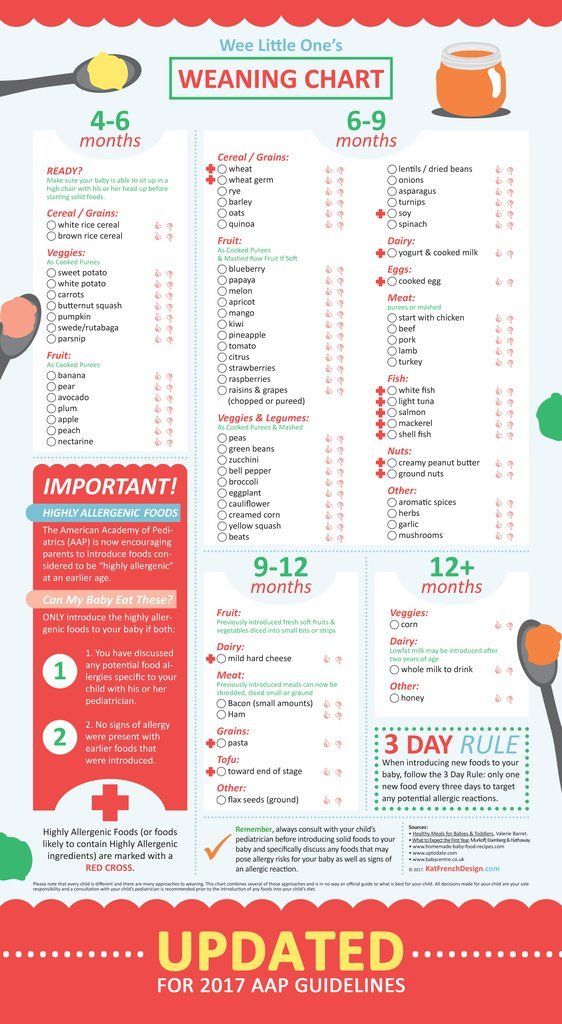 Do NOT let them have hot dogs, raw vegetables, nuts, meats, hard candy, or sticky textures such as nut butters that have increased choking risks at this stage.
Do NOT let them have hot dogs, raw vegetables, nuts, meats, hard candy, or sticky textures such as nut butters that have increased choking risks at this stage. - Introduce new foods one at a time in case there are any concers about allergies.
- Chop all foods into soft, bite-sized pieces, 1/2 inch or smaller.
- Watch out for choking hazards: Avoid round, firm foods like carrots, grapes, and hot dogs and skip anything like raw veggies and peanuts. Raisins and popcorn are dangerous for babies.
- Keep up your formula or breastfeeding schedule, but as your baby eats more solids, they’ll naturally start to take less milk. Your baby needs to start eating more solids and drinking less milk for the nutritional value at this stage.
Your Baby's Development This Week
Your baby is getting stronger and may even be moving around, whether they are sliding around on their belly in reverse, scooting on their behind, or actually crawling forward. If you haven’t childproofed your house already, don’t wait any longer!
You may notice these growing signs of motor development:
- Your baby is probably now able to sit on their own for several minutes, without using their hands for support and they may be able to get up into a sitting position all by themselves.

- While you offer them support, they should be able to bounce up and down, and possibly even pull up to a stand.
- Their little hands are increasingly agile -- they are getting better at passing a toy back and forth from one to the other.
You might wonder about:
- Their vision. Your baby should be able to see nearly as far as an adult by now and can track moving objects with their eyes.
- Stranger anxiety. You’re not imagining it: They may fear new people and situations. So give them time to warm up and reassure them if they are upset.
- What they can understand. Your baby might comprehend more than you realize, so it’s important to keep talking to them about everything you’re doing and try to be consistent about the words you use for familiar objects.
Month 7 Week 3 Tips
- If food allergies run in the family, talk to your pediatrician about introducing highly allergenic foods like peanuts and eggs.
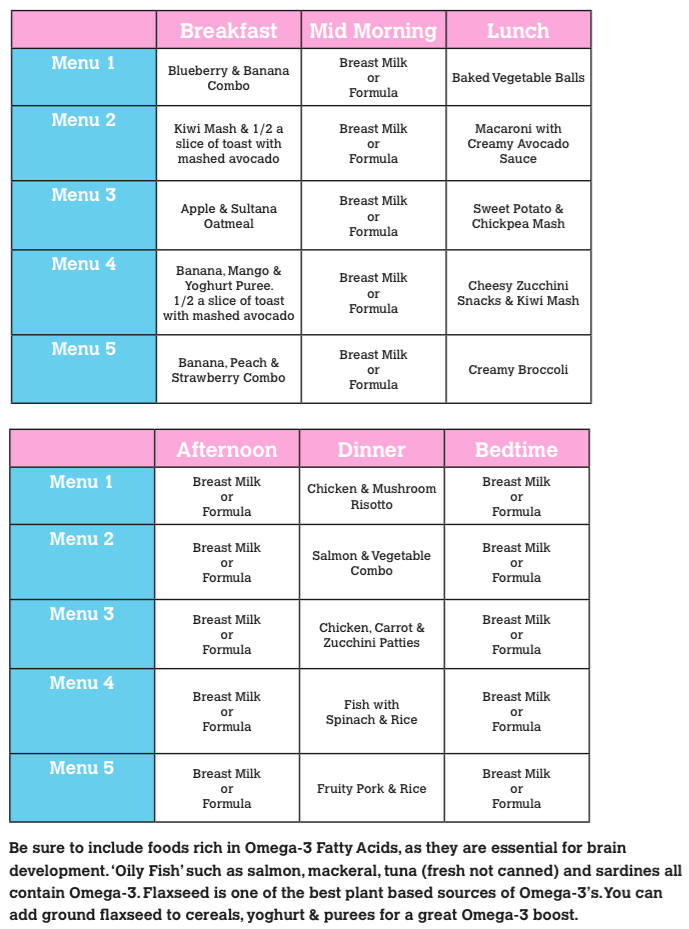
- Fried foods are not good choices for babies. If you offer them at all, do so rarely.
- Avoid feeding your baby juice unless it is fresh-squeezed.
- By now, your baby’s diet should include grains, fruits, vegetables, and meats, and they should be eating two to three meals a day.
- In addition to rice, barley, or oat cereal, you can introduce grain products your baby can grab, such as toast, crackers, and dry cereal. Avoid any colorful, sugary cereals.
- Sit baby in their high-chair for feeding time. If they eat finger foods while crawling around, they are more likely to choke.
- You’re not done with breast feeding or bottle feeding. Your baby is starting the transition, but breast milk and formula are still key.
- Pureeing or mashing vegetables may make them easier for your baby to eat when they are first transitioning from a liquid diet to solids.
Diet for a child aged 7 months
When compiling a diet for a seven-month-old baby, distribute the products so that you get a certain prototype of the menu of an already grown-up child with breakfast and lunch.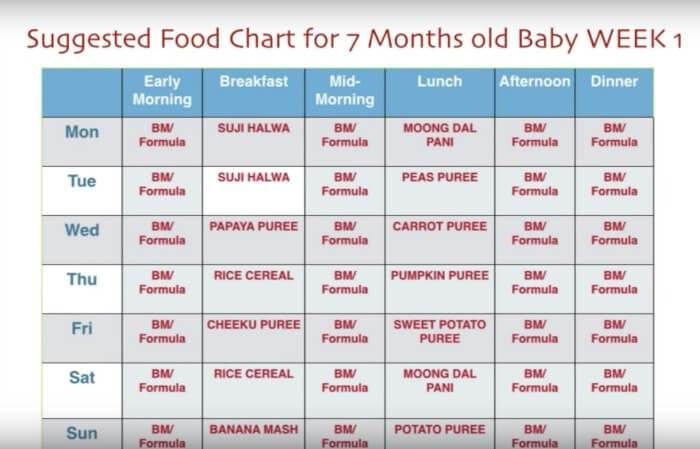
At this age, the yolk of a boiled chicken egg, a valuable source of fat, vitamin B12, A, phosphorus and selenium, is introduced into the child's diet. Chopped yolk can be added to porridge or vegetable puree.
At the age of 7 months, you can already give your baby a cracker (in the form of dried bread) and baby biscuits. nine0003
The volume of fruit puree and juice is increased to 70 g.
It is still better to give preference to commercially produced complementary foods, given their high degree of safety and variety. If the baby does not perceive a new product the first time, it can be mixed with an already familiar product.
Approximate diet for a child aged 7 months.
| I feeding 6 hours | Breast milk or VHI* | 200 ml |
| II feeding 10 hours | Dairy-free or milk porridge ** Butter Boiled egg yolk Supplementation with breast milk or VHI | 150 g |
| III feeding 14 hours | Vegetable puree Vegetable oil Meat puree Fruit juice | 170 g approx. 1 tsp. 30 g 70 ml |
| IV feeding 18 hours | Fruit puree Baby biscuits Breast milk supplement or VHI | 70 g |
| V feeding 22 hours | Breast milk or VHI | 200 ml |
* - infant formula
** - dairy-free porridge should be diluted with breast milk or infant formula that the child receives. Milk porridge is diluted with water. nine0003
Approximate diet of a 7-month-old child with cow's milk protein allergy:
| I feeding 6 hours | Breast milk or formula for infants with intolerance to cow's milk proteins | 200 ml |
| II feeding 10 hours | Dairy-free porridge* Vegetable oil Fruit puree (apple, pear) | 130 g approx. 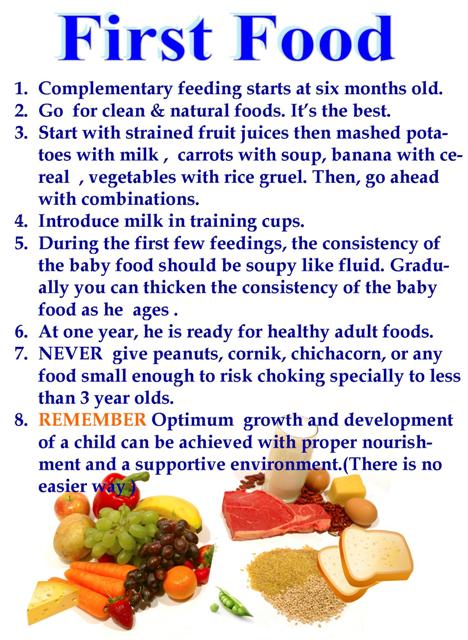 1 tsp. 1 tsp. 70 g |
| III feeding 14 hours | Vegetable puree Vegetable oil Meat puree (rabbit, turkey) | 170 g approx. 1 tsp. 30 g |
| IV feeding 18 hours | Vegetables or dairy-free porridge** Vegetable oil Meat puree | 180 g approx. 1 tsp. 20 g |
| V feeding 22 hours | Breast milk or medicated formula for infants with cow's milk protein intolerance | 200 ml |
* - dairy-free porridge should be diluted with breast milk or formula for children with intolerance to cow's milk proteins.
** - you can either alternate porridge or vegetables, or offer a mixed dish - porridge with vegetables.
Baby menu at seven months
0-6 months
Article
5/5 1 reviews nine0003
What should be the menu for a 7 month old baby? What foods and in what quantity can be introduced into the diet at this age? When and at what intervals to give the baby to eat? We will help develop an approximate menu for a 7-month-old baby and answer the most exciting questions regarding the nutrition of a baby up to a year old.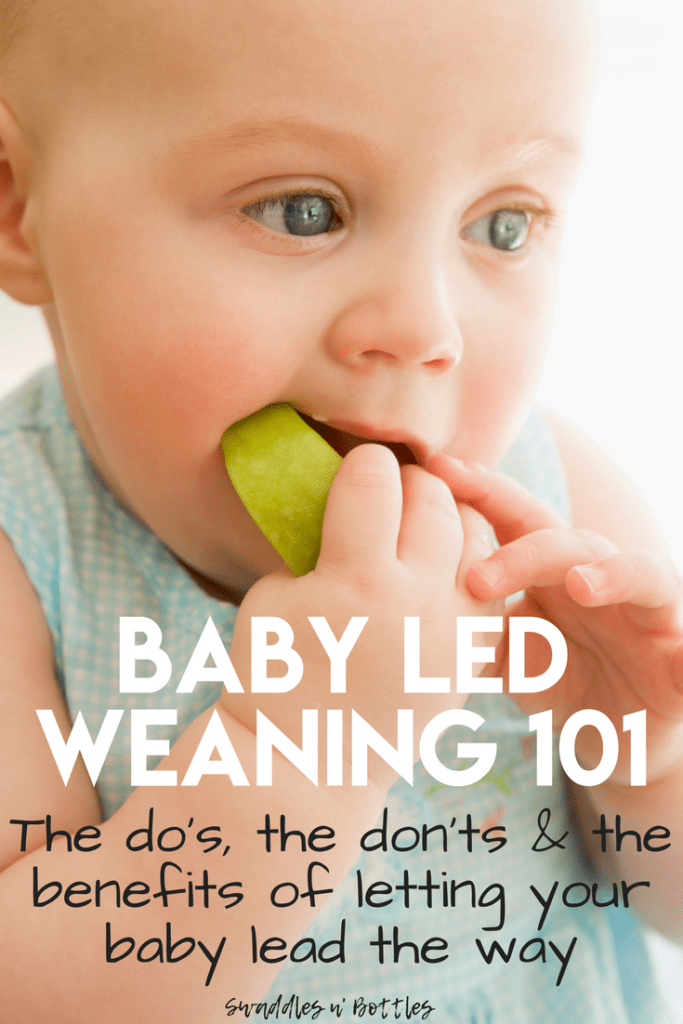
7 min. for reading Feb. 17, 2022
Contents
- Diet: when and how much should a child eat at 7 months
- Baby's menu at 7 months: introducing new products
- Consistency of dishes
- Meal schedule and approximate menu for each day
- Sample diet for a 7 month old baby allergic to cow's milk proteins: table
- FAQ
- Breastfeed your baby every 3-4 hours while breastfeeding.
- If you give your baby expressed breast milk, he needs approximately 710 grams per day. With 5-6 meals a day, this is about 120 to 200 grams of milk per meal. nine0173
- If the baby is formula fed (FW), he needs 170 to 230 grams of formula up to 4 times a day, provided that 2 more feedings replace complementary foods. To find out how much mixture you need, be guided by the instructions on the package, the recommendations of the pediatrician.

- From the age of 6 months, only mother's milk or adapted infant formula is not enough for a baby - he needs a variety of complementary foods. Introduce no more than one new product per day into the child’s menu at 7 months and consult a pediatrician first. After getting acquainted with different foods, up to three complementary foods can be given daily: this can be one or two tablespoons or 115-170 grams (8-12 tablespoons), depending on the baby and the specific product. nine0173
Important
The calculation of servings and the number of feedings depends on the individual characteristics of the development and needs of the child. Therefore, first of all, be guided by the recommendations of your pediatrician and the needs of the baby.
Baby menu at 7 months: introducing new products
The basis of the diet is still breast milk or infant formula. To diversify the menu, children's adapted food will help: fruit and vegetable purees, milk and dairy-free cereals, juices, as well as some products from the "adult table". nine0003
nine0003
Cereals
At 7 months, dairy-free and milk porridges, along with breast milk, are the basis of a child's nutrition. To start complementary foods, choose gluten-free liquid one-component cereals with a high iron content: rice, buckwheat, oatmeal. A little later - corn and semolina. Start complementary foods with half or a whole teaspoon, gradually increasing the serving to 150 grams.
Important
Dairy-free porridge is diluted with breast milk or milk formula, milk - with purified boiled water. nine0199
Find out more: Gerber® Baby Cereals: product range
Vegetable and fruit purees
Vegetable and fruit purees diversify the diet and introduce new tastes to the baby. According to WHO recommendations, the best product to start with is a one-component vegetable puree made from zucchini, broccoli, cauliflower or potatoes. These vegetables are less allergenic than other foods. If the child does not have allergies, pumpkin, carrot, pea and tomato puree can be given a little later. nine0003
If the child does not have allergies, pumpkin, carrot, pea and tomato puree can be given a little later. nine0003
Find out more: Gerber® Vegetable Purees
After introducing vegetable purees into your diet, it's time for your baby to get to know sweet and healthy fruit purees. Like vegetable, fruit complementary foods are also recommended to start with one-component low-allergenic foods. Apple, pear or banana puree is best for this. Start with half or a whole teaspoon and gradually increase the serving to 100-150 grams.
Find out more: Gerber® fruit purees
Meat
Meat is a developmentally necessary food rich in iron and protein, which is well absorbed in the body. Start with homogenized options. The product must contain only one type of meat (diet turkey, rabbit, chicken, veal) and no additional components. If the crumbs have a tendency to food allergies, choose meat very carefully, it is better to consult a doctor in advance.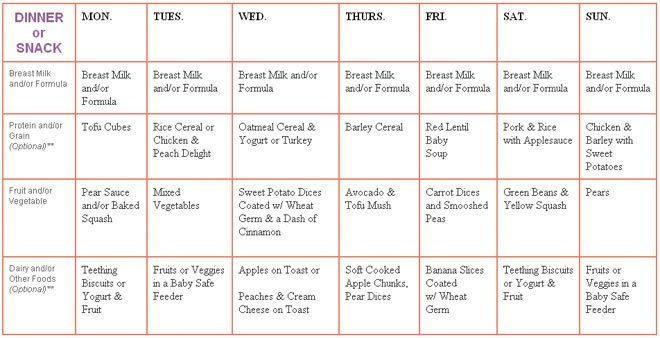 Pay attention to the composition of baby food and its age-appropriate baby. First, let the baby try half a teaspoon. If no adverse reactions occur, gradually increase the meat rate to 60 grams. nine0003
Pay attention to the composition of baby food and its age-appropriate baby. First, let the baby try half a teaspoon. If no adverse reactions occur, gradually increase the meat rate to 60 grams. nine0003
Find out more: Gerber® Meat Purees
Juices
Fruit juice is great for snacking and menu variety. Young children tolerate clarified apple and pear juice better, so they should be introduced first. Give the baby adapted baby juices: they do not contain sugar or other additives undesirable for the child. Ordinary store-bought juices can only be drunk by children over three years old.
0014
Advice
Introduce your baby to juices after introducing cereals and vegetable purees. Often the child gets used to sweet juices and then does not eat foods with a less bright taste.
Egg yolk
In addition to cereals and mashed potatoes, boiled egg yolk is introduced at the age of 7 months, as it is an excellent source of omega-fats, selenium, phosphorus and vitamins. Please note that you need to give the egg not the whole, but only the yolk. But, like any other product that you give to try for the first time, it should be introduced carefully and little by little to make sure that the baby does not have an allergy. Do not combine with other food! Only when you "test" the yolk, it is allowed to add it to cereals and vegetable purees. nine0003
Please note that you need to give the egg not the whole, but only the yolk. But, like any other product that you give to try for the first time, it should be introduced carefully and little by little to make sure that the baby does not have an allergy. Do not combine with other food! Only when you "test" the yolk, it is allowed to add it to cereals and vegetable purees. nine0003
Important
It is believed that allergic children can be fed quail eggs. But it is important to remember that quail eggs can also be allergic, as they also contain egg white - an allergen that is found in chicken eggs. Therefore, do not experiment, but seek the advice of a pediatrician.
See also: Introduction of complementary foods to children with food allergies
Baby cookies and croutons
At seven months, some babies begin to erupt their first teeth. Therefore, you can add crackers and children's cookies to food. But do not forget that they should not be too hard so that the child does not get hurt and choke. It is also better to choose special products without added salt, sugar, synthetic leavening agents and preservatives.
But do not forget that they should not be too hard so that the child does not get hurt and choke. It is also better to choose special products without added salt, sugar, synthetic leavening agents and preservatives.
Important
The child should eat solid food in a sitting position and strictly under adult supervision. nine0199
Consistency of dishes
The main component of the diet remains liquid and homogeneous (no lumps) - breast milk or milk formula, milk and dairy-free cereals. As the baby grows, the baby's food should change from liquid and homogeneous to thicker and puree, mashed. When the body adapts and is able to digest solid food, they begin to carefully introduce small, medium and coarsely ground foods, give children's cookies and crackers. At 7 months, some babies already have teeth, but the child cannot yet chew thoroughly and safely swallow vegetables, fruits and meat. Therefore, solid food should be given only in a grated form.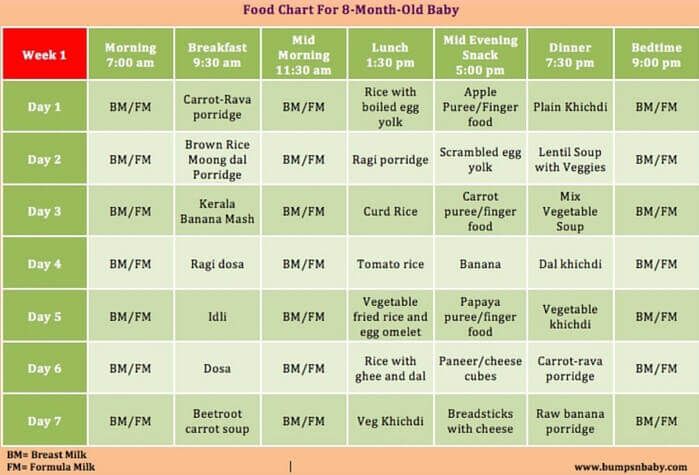 It is important that the puree is not too thick, otherwise the child may accidentally choke. nine0003
It is important that the puree is not too thick, otherwise the child may accidentally choke. nine0003
Advice
If you are making puree yourself, carefully remove everything that is not rubbed and can get into the crumbs' respiratory tract: bones, fat, veins, skin, films. To make the puree easier to swallow, add some boiled water, unsalted vegetable broth, vegetable puree already familiar to the baby, or breast milk (milk mixture).
By about 7 months of age, the baby has mastered the skill of "palm grip" and can independently hold solid food in the handle. From now on, you can give your child special baby cookies or snacks. At the same time, make sure that the baby eats slowly, in a sitting position and does not choke. nine0003
Important
Your baby should be ready for more sticky or solid foods. Therefore, before changing the consistency of food for a child, consult a pediatrician.
What can be given to children at 7 months and at what time to feed? Parents can begin to form a classic division of food consumption per day. But at 7 months, the baby needs to be fed not three or four, but five times a day at intervals of four hours. The first and final feeding is mother's milk or formula. Complementary foods are not given at this time in order to prevent overeating. nine0003
But at 7 months, the baby needs to be fed not three or four, but five times a day at intervals of four hours. The first and final feeding is mother's milk or formula. Complementary foods are not given at this time in order to prevent overeating. nine0003
*Dairy-free porridge should be diluted with breast milk or infant formula given to the baby. Milk porridge is diluted with water.
Advice
Do not salt or sweeten food. It is better to introduce the baby to sugar and salt after a year.
| Feeding time | Products | Serving Size |
|---|---|---|
| I feeding 6 hours | Breast milk or medicated formula for infants with cow's milk protein intolerance | 200 ml |
| II feeding 10 hours | Nestle® Dairy-Free Rice Porridge* | 130 g |
| Vegetable oil (add to food) | about 1 tsp. | |
| Gerber® Apple or Williams Pears Fruit Puree | 70 g | |
| III feeding 14 hours | Gerber® Vegetable Puree Broccoli, Cauliflower | 170 g | nine0027
| Vegetable oil (add to food) | about 1 tsp. | |
| Gerber® Meat Puree Tender Vegetables with Rabbit | 30 g | |
| IV feeding 18 hours | Vegetable puree or dairy-free porridge** | 170 g |
| Vegetable oil (add to food) | about 1 tsp. | |
| Gerber® Tender Turkey Meat Puree | 20 g | |
| V feeding 22 hours | Breast milk or formula for infants with intolerance to cow's milk proteins | 200 ml |
*Dairy-free porridge should be diluted with breast milk or formula for infants with intolerance to cow's milk proteins. **you can either alternate porridge or vegetables, or offer a mixed dish - porridge with vegetables.
Now you know what products and in what form can be introduced into the child's menu at 7 months. It is preferable if it is certified baby food that meets all age requirements and high safety standards. nine0003
See also: Do we cook ourselves or use baby food?
1.

